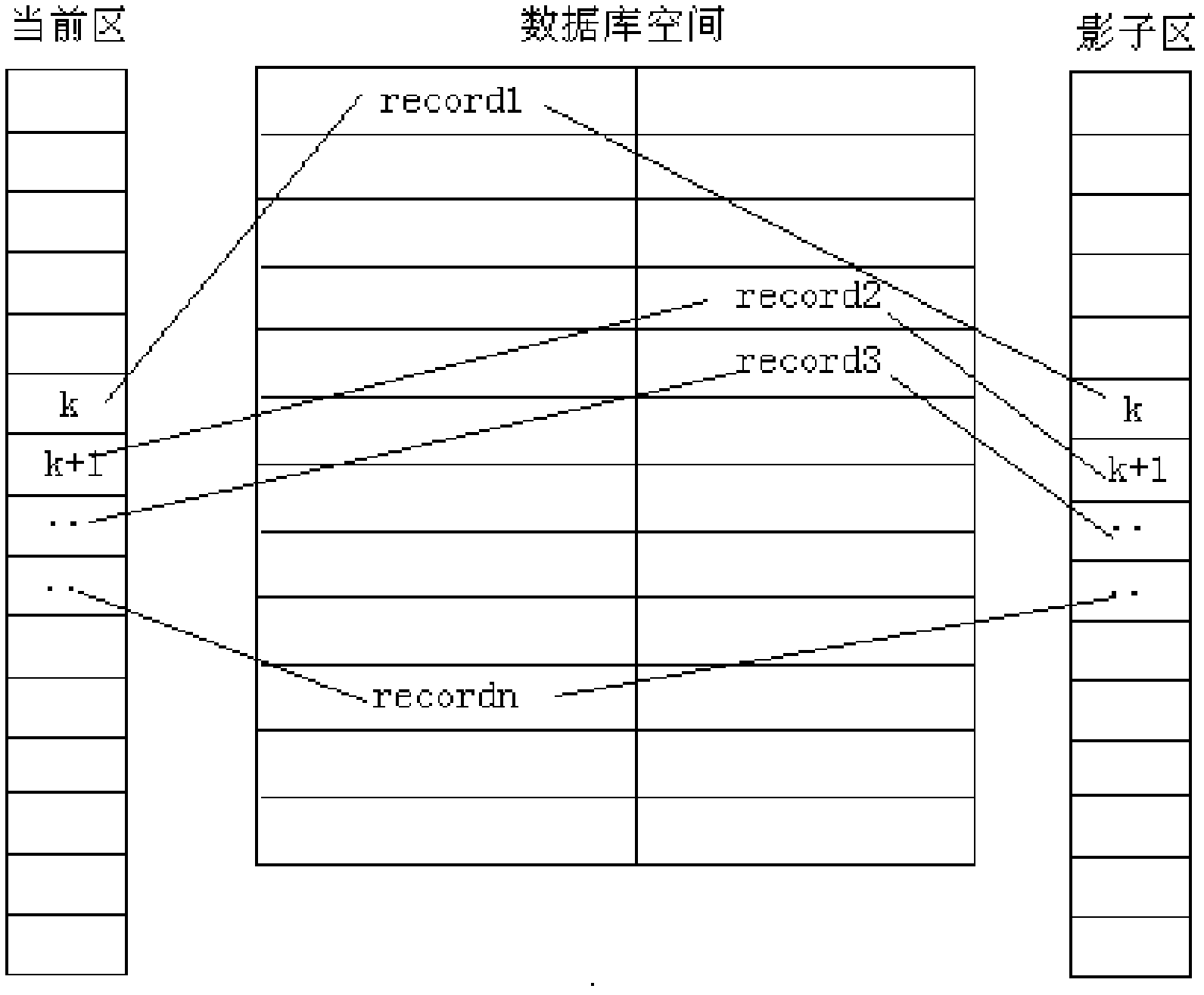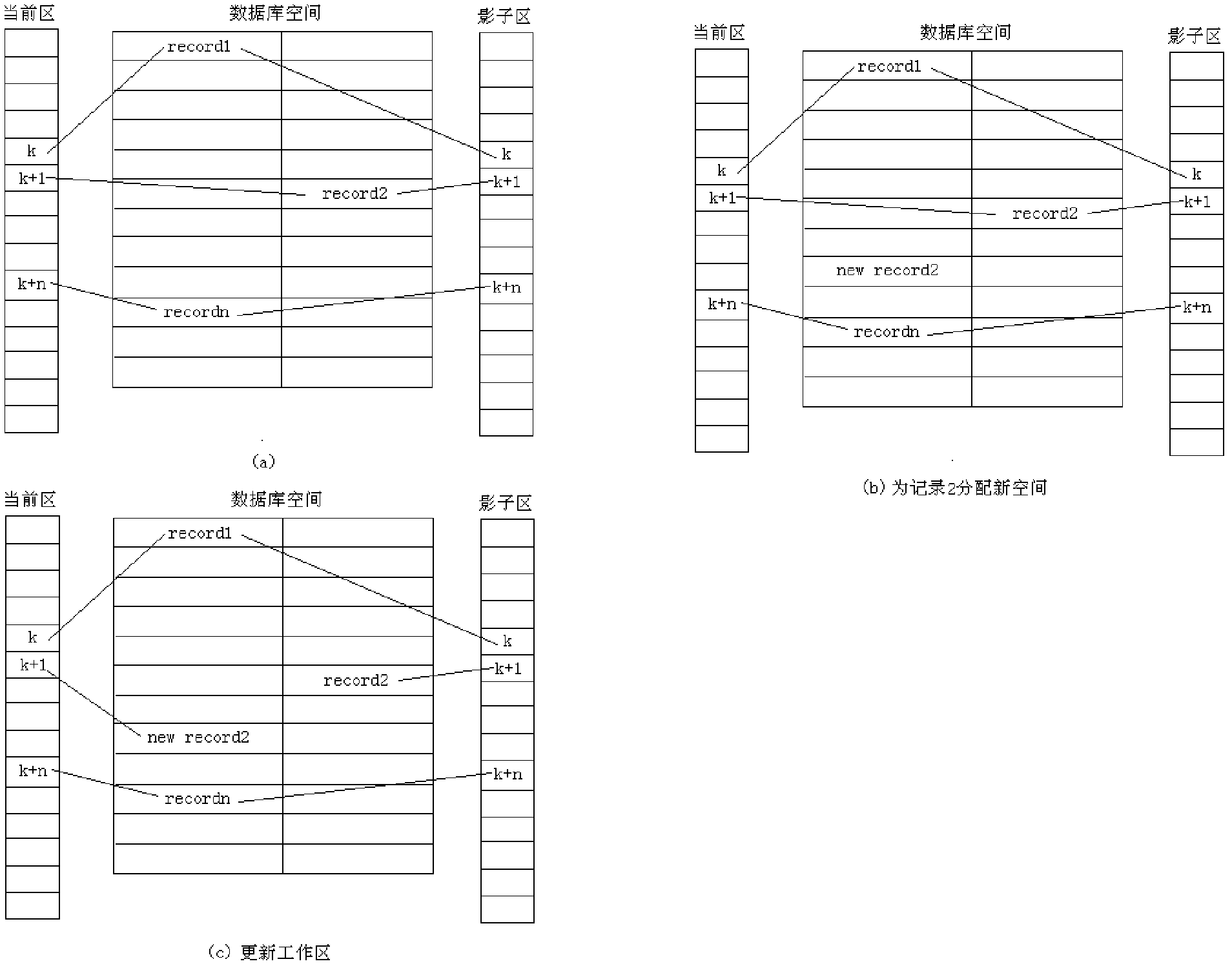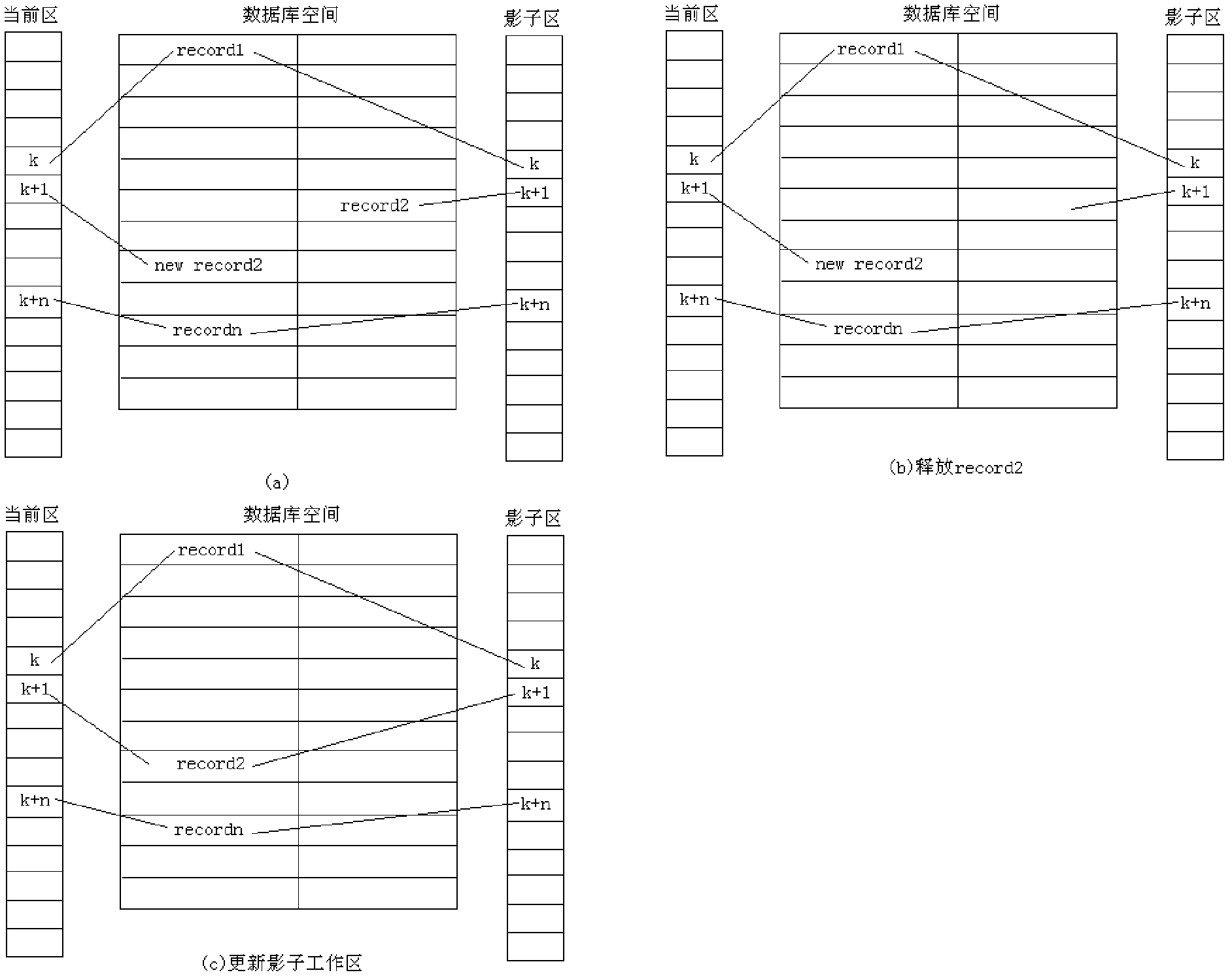Embedded-database-system-oriented no journaling transaction processing method
A transaction processing and database technology, applied in the field of database management, can solve problems affecting database performance, unbearable disk overhead, inapplicability, etc., and achieve the effect of simple commit and rollback operations and efficient transaction processing
- Summary
- Abstract
- Description
- Claims
- Application Information
AI Technical Summary
Problems solved by technology
Method used
Image
Examples
Embodiment Construction
[0019] The no-log transaction processing method provided by the present invention proposes a transaction processing mechanism of a brand new concept. The feature of this transaction processing mechanism is to use two work areas to maintain data in the database and record user operations on the database. The two working areas are named "Current Area" and "Shadow Area" respectively. During the running of the transaction, the shadow area is used as the backup of the current area. With the running of the transaction, the content of the two workspaces will be inconsistent, and the inconsistent content is the change of data during the running process of the database. When committing a transaction, the content of the current zone shall prevail to make the change of the database content take effect. When rolling back a transaction, the content of the shadow area shall prevail, and the changes to the database content shall be canceled. The above transaction processing mechanism does...
PUM
 Login to View More
Login to View More Abstract
Description
Claims
Application Information
 Login to View More
Login to View More - R&D
- Intellectual Property
- Life Sciences
- Materials
- Tech Scout
- Unparalleled Data Quality
- Higher Quality Content
- 60% Fewer Hallucinations
Browse by: Latest US Patents, China's latest patents, Technical Efficacy Thesaurus, Application Domain, Technology Topic, Popular Technical Reports.
© 2025 PatSnap. All rights reserved.Legal|Privacy policy|Modern Slavery Act Transparency Statement|Sitemap|About US| Contact US: help@patsnap.com



